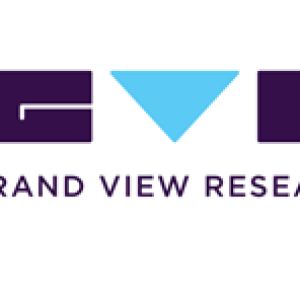Rat Model Market To Hit Value .41 Billion By 2030 |Grand View Research, Inc.Posted by Mrudula Anil Karmarkar on February 27th, 2023 The global rat model market size is expected to reach USD 2.41 billion by 2030, according to a new report by Grand View Research, Inc., expanding at a CAGR of 7.81% from 2022 to 2030. Genetically modified organisms are extensively used in research for identifying potential therapeutic targets and further validation of the same. The extensive healthcare-based research has driven the market for understanding diseases and genetic illnesses of humans. During the COVID-19 outbreak, researchers were focused on understanding the pathogenesis and transmission of the SARS-CoV2 virus by using the readily available animal model in addition to in-vitro and ex-vivo culture systems. These models also helped in the evaluation of vaccines and antivirals for the treatment. Companies creating transgenic animals used this as a perfect opportunity to provide the scientific community with genetically modified rats for evaluation of SARS-Cov2 entry. For example, in 2020,Envigo created the hACE2 knockinrat model through CRISPR-based technology. ACE2 serving as a primary receptor facilitates the entry of the SARS-CoV2 virus and is being investigated as a potential preventative target. Animal models continue to be significant tools for preclinical testing of potential therapeutics and understanding disease mechanisms. Increased spending on research and growing number of clinical trials are the key factors contributing to the market growth. The rising incidence of genetic diseases globally and the surge in the use of animal species to advance various groundbreaking therapies are expected to further propel the market growth. Post completion of The Human Genome Project in 2003, there have been evident advancements in synthetic and molecular biology for understanding the genetic basis of diseases. These advanced technologies and products have also made it easier to create genetically engineered models (GEM) of rats, wherein different types such as knockout, outbred, inbred, and conditioned are now available in the market. The market is expected to observe direct competition from the mouse/mice model. The mice models have been long preferred due to their small sizes and they offer economic as well as more established choices for discovery and early stage research. However, the vast use of gene editing tools in rats and the similarity of rat and human genomes make the rat model suitable for genetic manipulation and handling of experiments, thus fueling the market expansion. To Request Sample Copy of this report, click the link: https://www.grandviewresearch.com/industry-analysis/rat-model-market/request/rs1 The growth of the market is attributed to a rise in the demand for medicines, which has facilitated the increase in research activities for better health. Moreover, advent of gene engineering tools has allowed the use of genetic engineering in rat models. These genetically engineered models (GEM) are exhaustively used to identify as well as validate the pharmacokinetics and pharmacodynamics of therapeutics during pre-clinical and clinical trials. The increasing consumption of medicines and consequent increase in testing of drugs will drive the market in the forecast period. Rat Model Market Report Highlights
The COVID-19 pandemic has had a positive impact on the market growth. There was a heavy influx of investment and grants from both government and key players towards the development of detection and treatment plans for COVID-19 infection. This increased spending was directly proportional to the increase in the research activities for the development of novel vaccines and diagnostics. For instance, in 2020, Mirimus Inc., a U.S.-basedinnovative animal model generating company, announced that it has collaborated with an academic group of researchers. These researchers created a rat model with human ACE2 receptors to study the entry mechanism of the SARS-CoV-2 virus. Such initiatives demonstrate the growing use of the rat model for understanding disease pathogenicity and further developing therapeutics for treatment. The use of rat models for disease experimentation and research has become more appropriate in the past few years. These models provide insights into human disease that others will not allow. Additionally, in the case of rats precisely, their specific DNA and physiology have permitted researchers to discover a variety of pathophysiological and physiological mechanisms. Rats have since been used to answer an extensive range of scientific questions associated with human diseases in the fields of pharmacology, nutrition, physiology, toxicology, immunology, learning, and behavior. Moreover, the physiological similarity between the rat and human genomes has furthered the adoption of rat models in research. Also, after developments in gene editing and gene targeting due to the advent of synthetic biology, it has been possible to exactly modify the rat genome to produce knockin and knockout models. This is further improving the perception of human disease through the advancement of customized powerful CRISPR rat models. Moreover, these GEM rat models are likely to decline drug failure in clinical trials. As per a study published in The Conversation in February 2022, about 90% of drugs fail in the clinical trial stage, which often increases the development time and costs to market. List of Key Players of Rat Model Market
Like it? Share it!More by this author |


